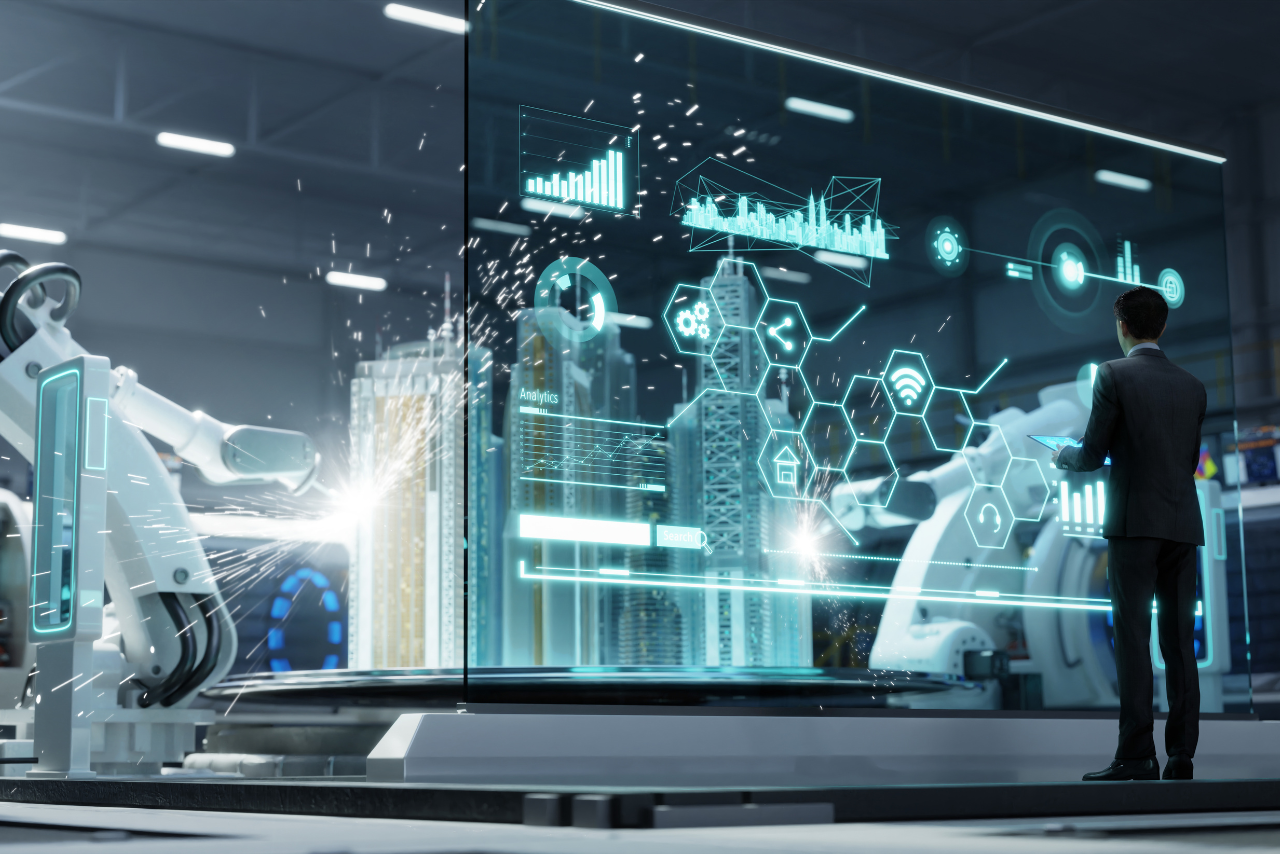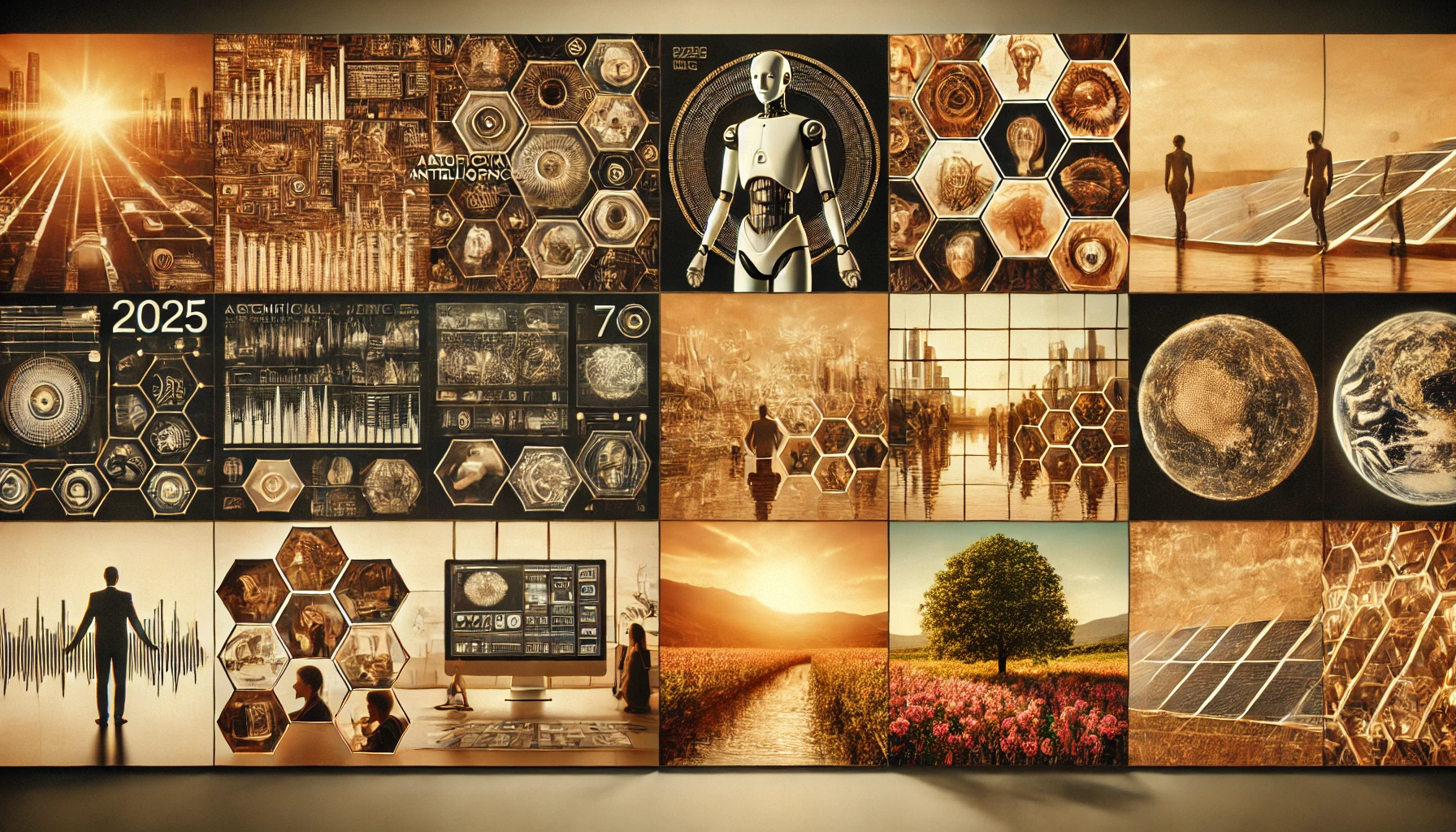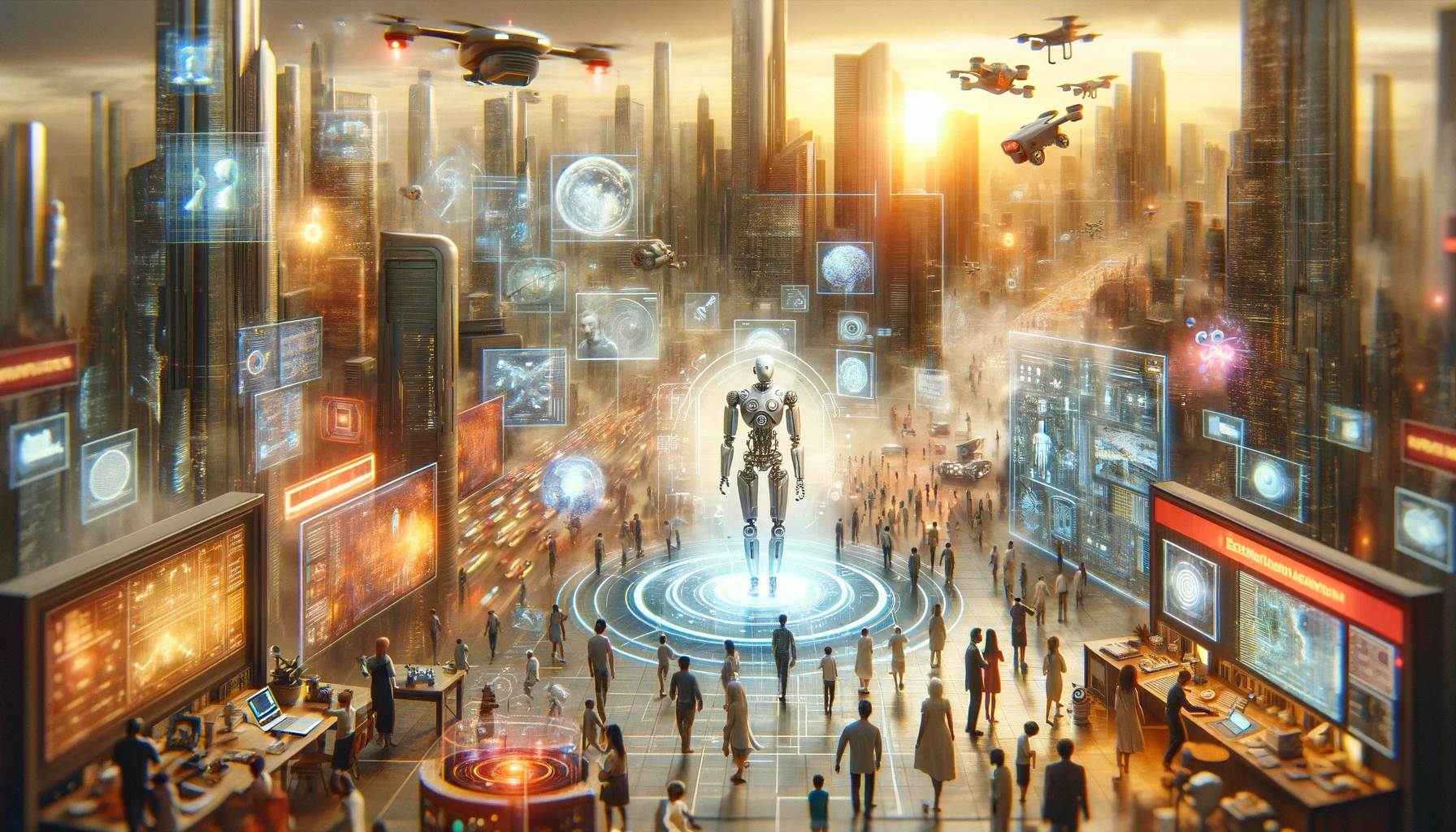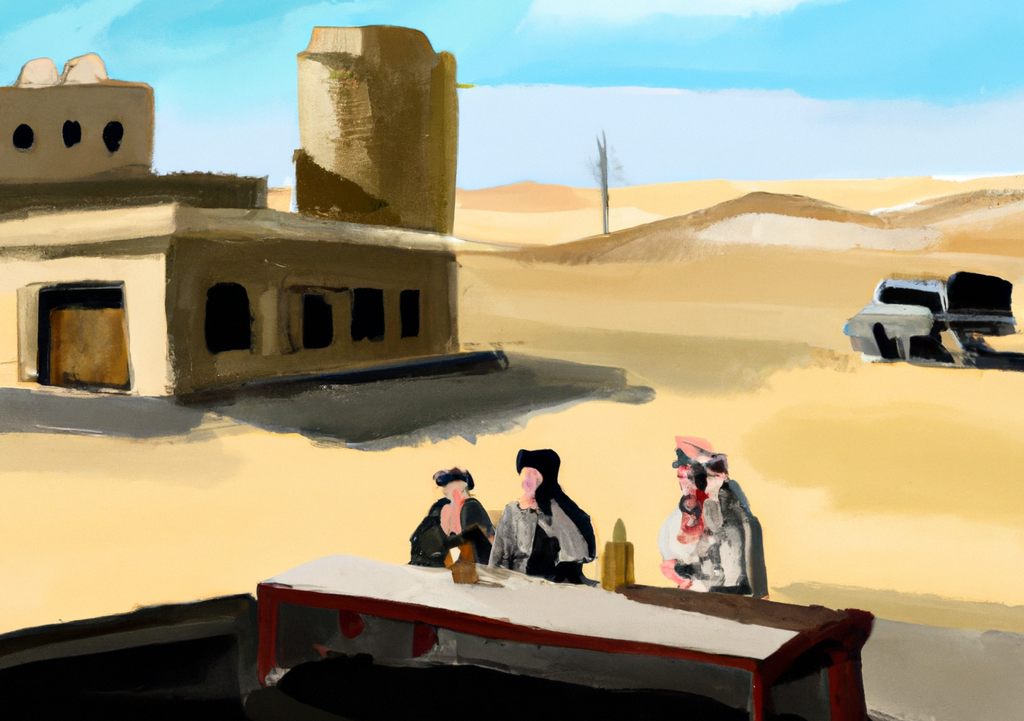What are foresight driven organizations? How are they organized, how do they handle innovation, leadership & culture?
As a business expert, futures researcher and innovation scientist, I share my insights and ideas in this article:
- Future-oriented business
- Transformative organizations
- Developing future orientation
- Adaptability
- Topic: Work and artificial intelligence
Why is it necessary to be future-oriented?
Future-oriented business
Developments follow each other in rapid succession. Think of climate change, climate adaptation, electrification, political events, wars, economic changes, scientific breakthroughs and technological developments.
A number of acronyms describe this state of the world as:
- VUCA (Volatile, Uncertain, Complex, Ambiguous);
- BANI (Brittle, Anxious, Non-linear, Incomprehensible);
- RUPT (Rapid, Unpredictable, Paradoxical, Tangled);
- TUNA (Turbulent, Uncertain, Novel, Ambiguous);
Other terms used are transformation, transition or the polycrisis.
The term polycrisis means a number of crises coming together: think climate, wars, increased inequality and resource shortages.
Research firm Quantumrun argues that a cognitive shift is needed to deal with this. Organizations need to redesign their approach around crisis management, knowledge and long-term planning.
A business in this day and age is like riding a bicycle or operating a nuclear reactor.
Adam Tooze, historian
Historian Adam Tooze compares it to riding a bicycle or operating a nuclear reactor: it’s unstable and dangerous, but it offers enormous benefits if you do it right.
In short: keep steering well and moving forward as a company, then you can flourish in the current times.
How to become a transformative organization
Transformative organizations
Research by Rotmans, Loorbach and Huffenreuter from 2014 shows that 5 to 10% of medium and large companies are transformational. They state that 15 to 20% are proactive and the remaining 70 to 80% are reactive.
Here, a transformative company is defined as ‘a company that picks up signals from outside and quickly translates them into new concepts and business models.’
Picking up on signals is what I call the first part of being forward-looking. Is that a skill you can learn?
Developing future orientation
René Rohrbeck and Menes Kum believe that foresight is a skill that can be developed. They published their paper in 2018 based on years of research.
Their hypothesis was that foresight would enable companies to notice trends earlier than their competitors, better understand how such trends affect their organization and identify the most effective strategy, ultimately gaining competitive advantage. In doing so, they drew on Hamel and Prahalad’s earlier work from 1994.
The hypothesis was confirmed by Rohrbeck and Kum in their research: forward-looking organizations are on average 33% more profitable and grow 200% faster.
Dimensions
Rorbeck and Kum distinguish five dimensions of forward-looking organizations:
- Collecting information. How does an organization do that and what kind of information does one pick up?
- Approach. Does the organization have a structured process in place to analyze and review information?
- Organizational structure. Is there an internal network of people who devote part of their time to futures research? Are they all in the same department or do they form a powerful network through all organizational layers? Even better, do they network with people from other organizations with similar roles?
- Dealing with new information. Does one view futures research as a stand-alone project? Does one succeed in interpreting the outcomes in a way that they can be translated into pilots and strategy?
- Culture. Is it normal to talk about trends and signals? Are employees aware that a dynamic, complex environment always involves change and that it is necessary for the success of the organization to respond accordingly?
I will return to some of these dimensions in the rest of this article.
Examples
In their paper, Rorbeck and Kum describe a number of organizations and how they have developed their futures orientation:
- A food manufacturer set up a joint platform for market and customer research together with their suppliers;
- A car manufacturer launched a Venture Capital arm to use it to invest in start-ups to complement their current supply chain;
- A telecom company expanded its customer research to Asia and Berlin to better identify the preferences of young users.
Adaptability is an important element of forward-thinking.
Tip: train adaptability
What can you do yourself now? The most important tips I want to give you as a futurist is to stay curious, adopt an inquisitive attitude and keep training your adaptability.
Adaptability is about moving smoothly with change and learning new things to meet those challenges. It is a mix of being flexible, coming up with smart solutions and learning from what you experience.
The backward bicycle is a great metaphor for training your adaptability. The bicycle shows relentlessly how difficult it is to adapt your habits and routines. Also applicable when it comes to being future-oriented, as you have to adopt new ways of thinking.
With this bike, the handlebars and the direction of travel are reversed. So: steering to the left, the bike goes to the right. And vice versa.
This is a video of the concept, it’s great!
Artificial intelligence is an important agent of change in organizations. How does artificial intelligence affect work, organizational structure and leadership?
Work and artificial intelligence
During my Business Administration studies in Groningen, all kinds of management thinkers, theories and models came along. From strategy to culture, from leadership to finance. My main interest was in innovation, so that’s where I did my master’s.
One of the biggest forces for innovation and change today is artificial intelligence. How does that affect work? What does that require in terms of training and retraining? And how can managers and leaders deal with it?
These are my insights:
- Layoffs in the technology sector;
- Schooling because of and with artificial intelligence;
- Leadership.
1. Dismissed
Ozempic is the latest craze in the United States. It is a type 2 diabetes drug that lowers blood sugar and reduces appetite. Despite its administration (a weekly injection) and price of over $900, the drug is breaking sales records.
In his readable article, Professor Scot Galloway makes the comparison between Ozempic and artificial intelligence:
- Companies are falling off with it (read: laying off employees);
- They are not very open about that.
After years of mass hiring, technology companies are now mostly implementing rounds of layoffs. By 2023, for example, Cisco’s workforce shrank by 5%, PayPal by 9% and Meta by 13%. Example from the Netherlands: tech company Bird laid off 20% of its employees due to automation.
This raises many questions for me: will these people find other jobs easily? Do new jobs arise in other places? Can they be retrained? Do they want to?
Which brings me to the second point: education.
2. Training
In this analysis at De Correspondent, Maurits Martijn makes the observation that since the 6o’s there has been talk of mass unemployment due to automation. An important passage from the article:
Technology does not automate jobs, but táken, and it can also create new tasks.
Therefore, when it comes to training and continuing education, I think it is smart to think about what tasks your job consists of.
Next: which tasks stand a chance of being automated, which tasks could become more important (and take up a larger part of the work week), and which tasks do you like best?
Next, what does this require in terms of retraining or continuing education?
What about my own work?
Example from my own work as a futures researcher and speaker:
- Probably automated tasks: reading papers, summarizing, doing accounting, creating images, transcribing podcasts, etc.
- Probably more important tasks: interviewing experts, contacting clients, maintaining my network, etc.
- Most enjoyable tasks: preparing lectures by thinking about the purpose of the meeting, the audience, the content and interactive forms of work to go with it. Plus: the lectures themselves.
- Training to do: interviewing, networking and speaking skills.
Of course, this is not just a task that should lie with the individual alone, but also with employers and governments. And given the speed of change, this is an issue you can answer periodically.
3. Leadership
Technological breakthroughs affect how we work, organize work and communicate about it. A few examples:
- Railroads in the United States in 1855 used a telegraph network to send and receive messages. This led to the first organizational structure: the familiar rakes and spokes.
- Henry Ford exploited the first mechanical clocks and standardized parts to build assembly lines.
- The Internet made agile and scrum possible around 2001, because of faster communication.
If we extend these historical examples to the present time, I am curious to see how artificial intelligence and especially generative AI such as ChatGPT will mean for organizational structures and leadership.
My prediction of what AI is going to mean:
- even more autonomy for professionals and teams;
- Promote successful experiments and exchange prompts between teams;
- continued development of human skills such as critical thinking, asking good questions and working well together.
PS. If you would like to hire me for a lecture or presentation on this topic, please contact me. Or check out the Foresight Innovation page first for more information, examples and references.







Leave A Comment